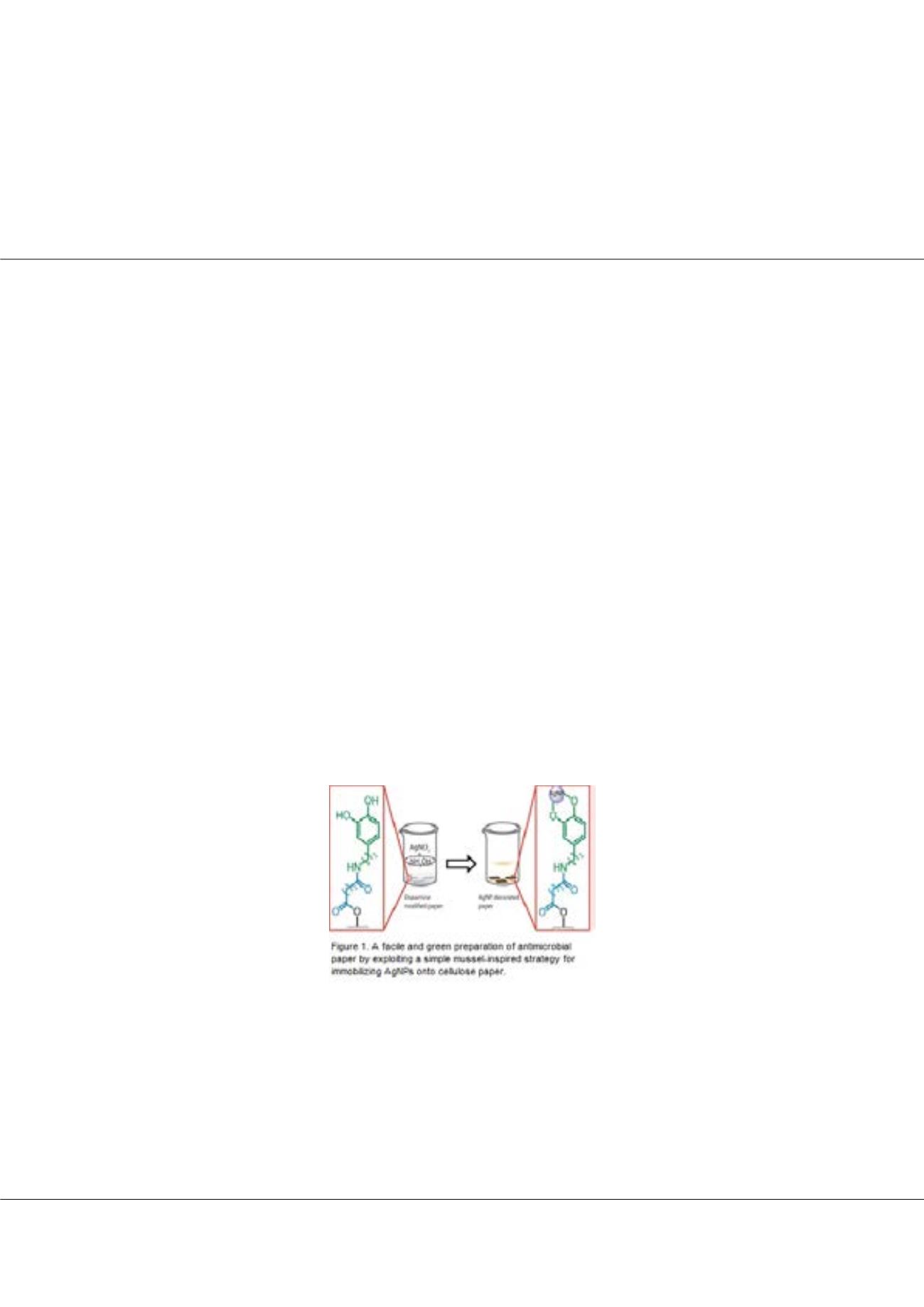

Page 67
conferenceseries
.com
RRJOMS | Volume 5 | Issue 4 | July, 2017
July 27-29, 2017 Vancouver, Canada
10
th
International Conference on
Emerging Materials and Nanotechnology
Abioinspired strategy for immobilizing silver nanoparticles towards the synthesis of antimicrobial paper
Md. Shafiul Azam
and
Md. Shafiqul Islam
Bangladesh University of Engineering and Technology, Bangladesh
Statement of the Problem:
Antimicrobial materials based on various nanoparticles has attracted huge attention in last few
decades because of the cheapness, easiness to use, and effectiveness in preventing annexation and proliferation of microbes
on material surfaces. Paper has been used in many applications as a matrix to carry the nanoparticles due to its high porosity,
considerable mechanical strength, and high availability. Silver nanoparticles (AgNPs) have widely been used as antibacterial/
antifungal agents in a varied range of consumer products because of their large active surface area. However, effective methods
for immobilizing AgNPs on cellulose paper or similar surfaces for various applications are inadequately advanced.
Methodology & Theoretical Orientation:
By exploiting a novel and simple mussel-inspired strategy, here, we present our
method for immobilizing AgNPs on paper. First, we modified cellulose paper with dopamine molecules by a simple, efficient,
and environmentally friendly approach. The dopamine molecules possess excellent adhesion and strong coordination with
metal substrates through catechol groups offering a potentially robust interface between AgNPs and organic structure of paper.
Next, AgNPs are deposited onto the paper by simply immersing dopamine modified paper in silver salt solution to attain the
antimicrobial properties.
Findings:
The SEM study of the synthesized antimicrobial papers confirmed that the loading of AgNPs was time dependent
and the average size of the nanoparticles became 50-60 nm after 12 hours of deposition time. FTIR and XPS analysis of the
paper modified at each step revealed the introduction of new functional groups through the synthesis. The mechanical strength
of the paper measured as similar as fresh filter paper by using a universal testing machine will also be presented.
Conclusion & Significance:
The paper decorated with AgNPs showed excellent antimicrobial activity against highly virulent
and multiple antibiotics resistant Gram positive and Gram negative bacteria. It also showed antifungal activity against some
extremely virulent fungal species.
Biography
Md. Shafiul Azam is the Principal Investigator of a materials and surface chemistry research group in the Department of Chemistry at Bangladesh University of
Engineering and Technology (BUET), Dhaka, Bangladesh. His multidisciplinary research is focused on the development of new multifunctional materials for energy,
health and environment. Multicomponent hybrid materials for achieving increased complexity and functionality in nanoparticles have attracted enormous attention
from researchers. These nanomaterials are composed of discrete domains of different components and thus can exhibit the properties of different components
in the same assembly. In his group, they synthesize surface-tailored, size-controlled inorganic nanoparticles and polymeric materials as well as investigate their
properties and potential applications.
azam@ualberta.caMd. Shafiul Azam et al., Res. Rev. J Mat. Sci. 2017
DOI: 10.4172/2321-6212-C1-002
















